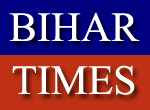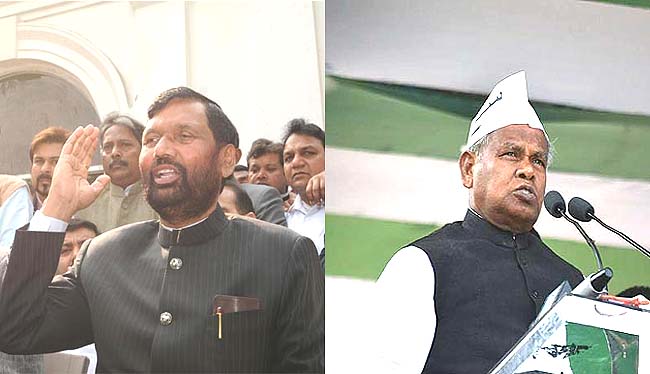|
14/06/2015 Ram Vilas and Manjhi: Heavyweights or overweight Dalit leaders |
If this really happens the NDA would be in a unique position to have two main Dalit leaders of Bihar on its side. Union food minister Ram Vilas Paswan’s LJP is already one of them. So it would be a case of upper castes and Dalits joining hands against the Janata Dal (United)-RJD combine––essentially a conglomeration of the backward castes. Mayawati made the Dalit-Brahmin alliance in Uttar Pradesh in 2007. But in that case the chief ministership was obviously in her hand. In Bihar both the Dalit leaders would play second fiddles. First Ram Vilas and now Manjhi were left with no option alone. The LJP was literally wiped out in Bihar in the 2010 Assembly election while Manjhi’s HAM failed to make any big impact. So aligning with the BJP was the best alternative. Mayawati’s BSP too had allied with the BJP but that was a totally different situation, where she was dictating the term and not the latter. The biggest problem with the BJP would be the same which JD(U)-RJD faced before finally agreeing last week. The LJP––along with Upendra Kushwaha’s RLSP––is busy demanding its own quota of seats. Now HAM has joined this race. Sources said that both the LJP and HAM are demanding 50 seats each which is too much for the BJP to leave. The two Dalit leaders will have to ensure that they secure a sizeable number of votes for the Hindutva party. In the last Lok Sabha election the BJP-led NDA secured highest––42 per cent––Dalit votes. But Paswans or Dussadhs form the main bulk of this percentage as about 68 per cent of them voted for the NDA. The biggest challenge for this alliance is: whether it would exceed the last year’s figures or not. Analysts seriously doubt the ability of the two leaders to pull a large percentage of Dalit votes, which form around 16 per cent of Bihar’s population. Even in the worst case scenario as last year the JD(U) and RJD-Congress combine totally managed to get about 30 per cent of Dalit votes––20 and 10 per cent respectively. Now that they are fighting unitedly this percentage may go up as both Nitish and Lalu still have some hold on Dalit votebank. But if the Nitish Kumar-Lalu Prasad duo fail and the BJP managed to get more Dalit votes than last year the JD(U)-RJD alliance may be in trouble. However, the challenge before the BJP is that prime minister Narendra Modi has lost his magical touch. Four months before the last Lok Sabha election, that is in January 2014, it was clear that Modi would lead his party to victory. But four months before the Assembly election this year there is confusion in the saffron brigade in the state. Till a few days back there was confusion in the JD(U)-RJD rank but after the announcement of Lalu on making Nitish a CM candidate––may be under compulsion––the picture is clear. The JD(U)-RJD combine has at least established an early psychological edge. If the BJP and its allies do not succeed in creating a favourable atmosphere and fail to emerge as a powerful challenger it may not be able to woo more than 42 per cent of Dalit votes. In that case the whole exercise of inducting one Dalit leader after another would prove as counterproductive. It would be a test for Ram Vilas and Manjhi to prove that they are heavyweights and not just overweight Dalit politicians.
| |

 Patna,(BiharTimes): The June 11 meeting of former chief minister Jitan Ram Manjhi with the BJP president Amit Shah has paved the way for the Hindustani Awam Morcha to become a constituent of the National Democratic Alliance.
Patna,(BiharTimes): The June 11 meeting of former chief minister Jitan Ram Manjhi with the BJP president Amit Shah has paved the way for the Hindustani Awam Morcha to become a constituent of the National Democratic Alliance.